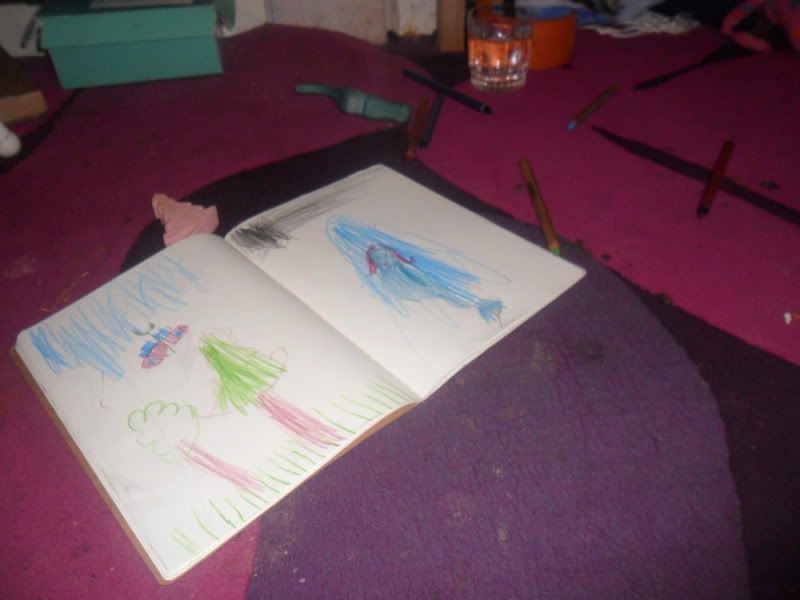
Jenna: Can I have some adding up please mumma?
Me: What kind of adding up?
Jenna: On paper, for me to work out, with just the numbers. I can do taking away too.
Me: Um, OK sweetie. I'll write you some questions.
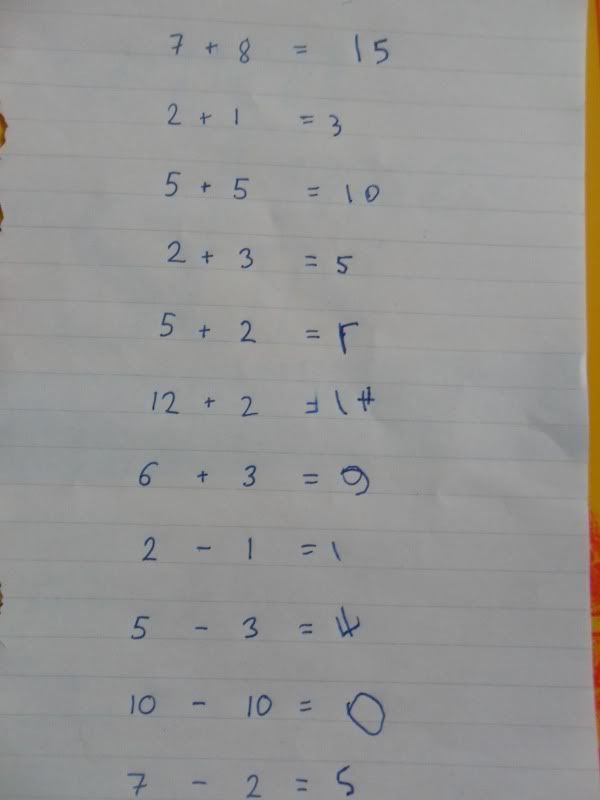
I am still taking the approach of not marking her work. I find it interesting to note that she doesn't make the same mistake over and over, and that often if she decides to check her answers (or ask me the answer) she can see where she has gone wrong (if at all). I don't tell her how to work something out unless she asks, and my first answer is always, "How do you think you could do it?" I don't direct her to answer them in order, or answer ALL of the questions, or tackle puzzles in a particular way. I also don't refuse to tell her the answer if she asks because she hasn't managed it.
She did all of those unaided, and even realised the one that she had made a mistake with (because "I was just thinking and thinking four is between five and three" she said). She often uses her fingers to count on (without being shown to do this), and sometimes jumps to an instinctive answer to a difficult question that is right first time, unable to say how she knew. I think she is one who is drawn to the academic and to knowing things or doing things for the sake of the learning itself rather than seeing a useful end. It's rather fun watching such determination and creativity in action!
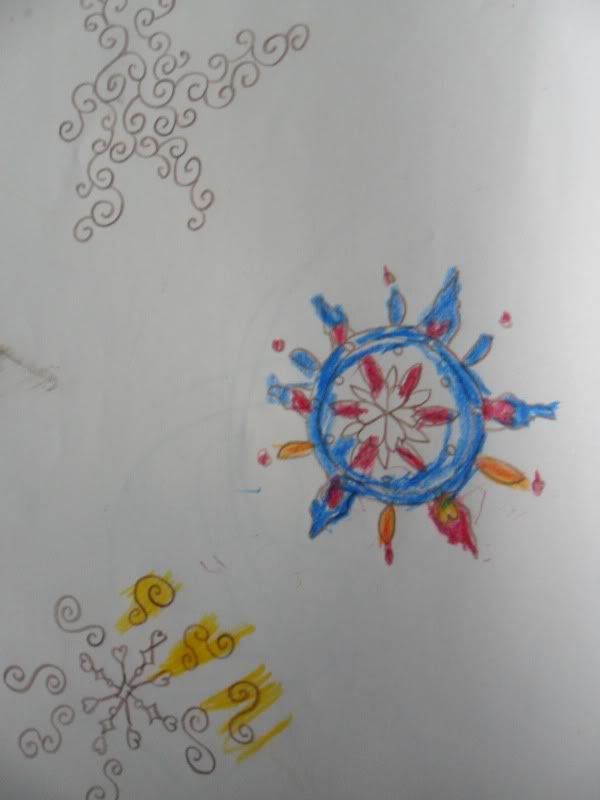
A poster of "a caterpillar and some patterns".
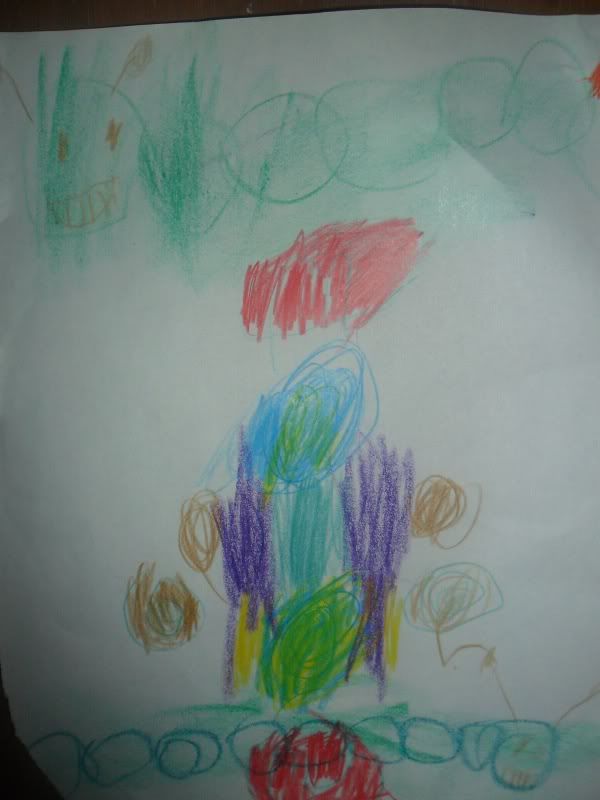
Love the interesting perpective in this garden with a pond. The blue on the tree and the ground is frost. *grins*
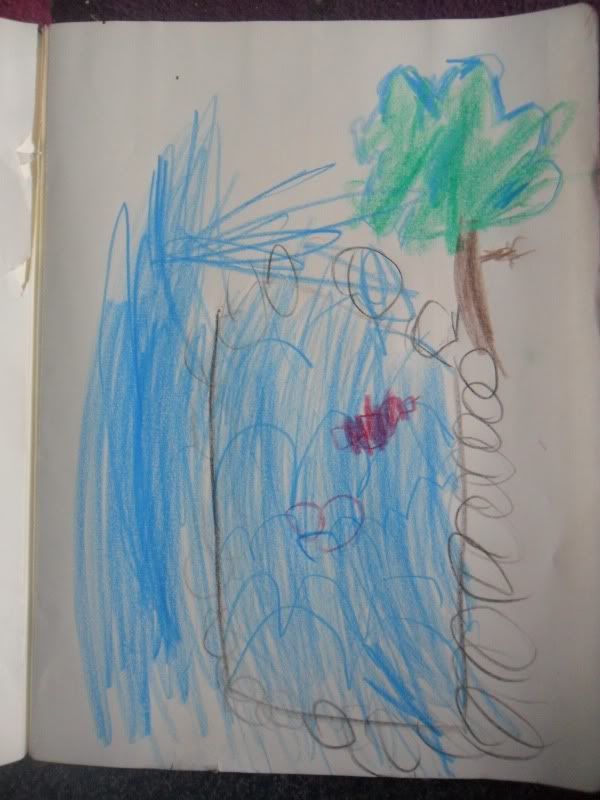
And another angle on "a house on a hill with a waterfall".
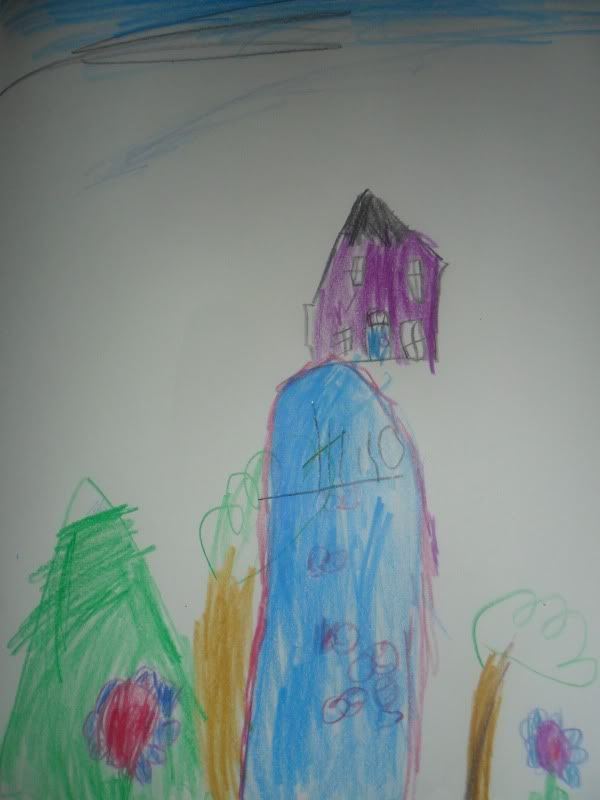
Sometimes her work is really filled with symbols and I can see where she has borrowed ideas and images from - sometimes there is something SO like an image in a picture book or a program - and sometimes I am at a loss how they learn this language of images. The house in that picture, archetypal simple lines, nobody taught it but it is borrowed pictoral shorthand. Sometimes the intuition makes me startle - a child who has never eaten cheese with holes in points to a picture in a book and says, "cheese" (Jenna aged 18 months).
"I'm going to make a Cat-in-the-Hat book, but I need you to make me some words..."
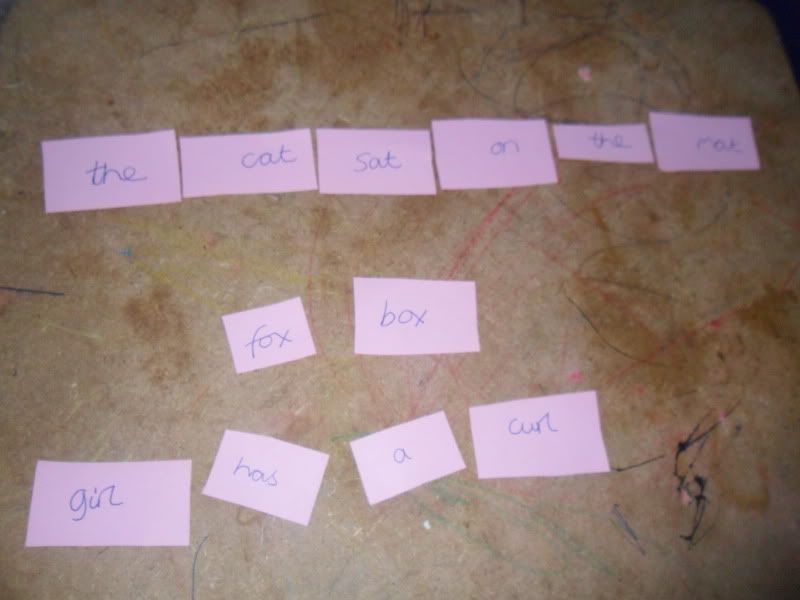
An assortment of coin rubbings and colour. She used to draw outlines only, and has recently decided that she likes to fill the whole page with colour instead. I am loving the bright rainbow stacks of pictures all over the house.
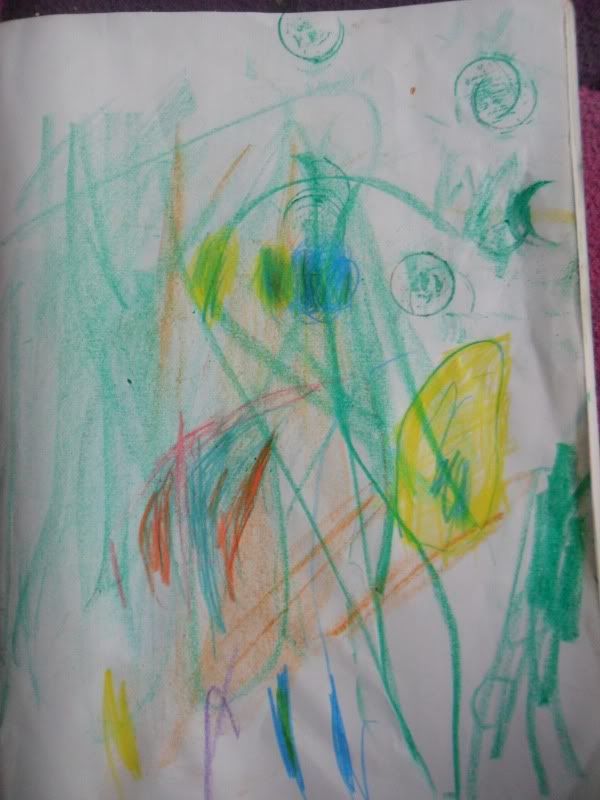
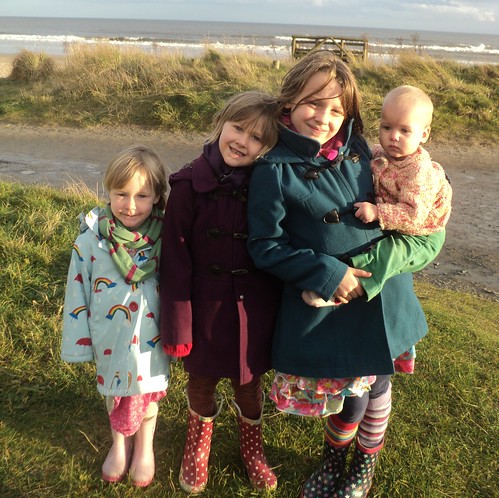










Loved the idea of asking her how she thinks she should aproach the problem!! hope to remember that when I have kids! xx
ReplyDeleteI have read a REALLY brilliant but old book about ways of approaching maths without *teaching* - Children Doing Mathematics or something like that?
ReplyDeleteIt was so fascinating - the teacher basically asked them to come up with their own ways of working things out, discussing in groups if they wanted, even did some work about instinctive grasp of number and children inventing their own symbol languages for number... Anyway, it made a huge impression - in fact I think it was probably my biggest first step along the road to autonomous learning.
But the question, "What do YOU think?" or "How do YOU think you could work this out?" is from that book, and I have since read in in many other places - I use it all the time!
How do the radiators get hot? How do YOU think it happens? I can gauge what they already know before answering, see what *kind* of answer they want (scientific, mythological, simple ie "I turned it on"). It is a great tool for communicating on the right level. :)
Definitely agree on the question of what do YOU think, I've been doing that instinctively with Tristan and it really does help with communication doesn't it? :) x
ReplyDeleteI actually was taught this way in a charter program that I was in in school and it is a wonderful way to learn. I learned deduction, reasoning, and how to research and find out if what I was doing was correct. It's true, you rarely make the same mistake twice. I wish more schools taught this way.
ReplyDeleteOh, love the caterpillar and some patterns!
xo Erin